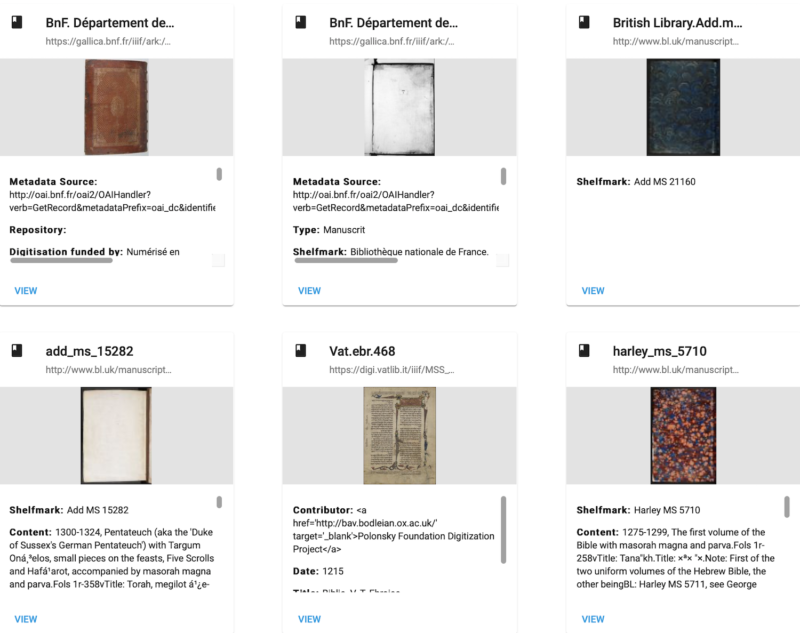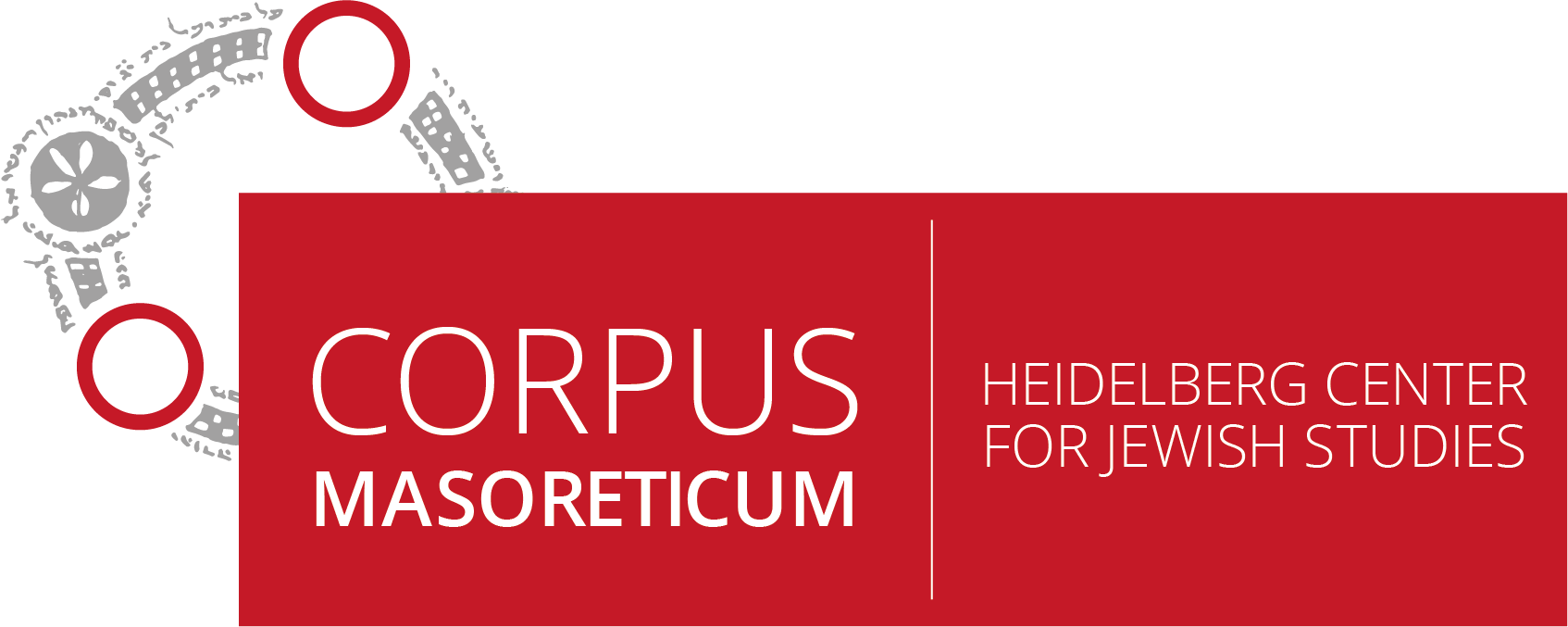Project description
Funded by the German Research Foundation, Corpus Masoreticum is a long-term project set to run for twelve years. The Corpus Masoreticum project engages with the Western European Ashkenazi Masorah tradition between the twelfth and fourteenth centuries. Using and further developing methods of Digital Humanities, Corpus Masoreticum uncovers Forgotten Cultures of Knowledge and aims at shedding light on the cultural background of the Western European Masoretic traditions and text cultures.
The text of the Hebrew Bible went through many stages of development, both oral and written. By the 8th century at the latest, various groups of Jewish Bible experts, the so-called Masoretes, engaged with all aspects of the biblical text in order to preserve it with the greatest care for future generations. Because Hebrew is a consonantal language, one of the things the Masoretes set out to do is to invent a system of signs for vocalisation and accentuation. In fact, various groups invented several such systems. In this process they had to make myriads of tiny but important decisions as to the precise spelling and pronunciation of the text. They did so with the greatest respect for the transmitted text. A primary technique was to annotate the Bible with an extensive and ever-expanding corpus of text-critical notes. This corpus of annotations is known today as the Masorah. The Masorah – in Hebrew: masoret – refers to rules of orthography, syntax, vocalisation, cantillation, and so on. Masoretic notes are rendered in the form of statistical notes with references to comparable biblical verses and were designed to ensure accuracy when transmitting and copying the text. Yet Masorah is more than just ‘footnotes’ to the biblical text. It conveys a whole system of medieval Jewish knowledge.
Masorah first appeared in comprehensive form in the great medieval oriental Bible codices, like the Codex Cairensis, the Aleppo Codex, and the Leningrad Codex, which were written between the 10th and 11th century. In these manuscripts, the Masorah comes in various formats: First, there is the Masora Parva or ‘small Masora.’ This is the heavily abbreviated Masorah usually written on the right and left to the columns of the main biblical text. Then, there is the Masora Magna or ‘large Masora.’ It is usually found in the top and bottom margins of the Bible text. There is also the so-called Masora Metsarefet, the 'accumulative' or ‘collative Masora,’ which at least in Oriental and Sephardi codices tends to occur at the end of the manuscript.
The Masorah also arrived in medieval Ashkenaz, the region that is now Germany and northern France. Despite its fundamental uniformity, the Hebrew Bible text and its accompanying Masorah always retained regional variations, which are worth studying from a historical perspective. In Ashkenaz, Jewish scribes and Bible experts transmitted and further developed the Masorah, as inherited indirectly from the Oriental codices. From an art-historical but also manuscript-technical and philological point of view, it is fascinating that the Masora Magna in Ashkenazi Bibles is sometimes shaped in all kinds of fancy geometrical and figurative patterns and designs, and is often ameliorated with collative Masorah. This phenomenon is known as the Masora Figurata. While some of the masoretic designs have been studied in some depth by art historians, more often than not this has happened without consideration of the masoretic text they consist of. In other words, very few scholars have bothered to decipher those tiny letters or to study them in any detail, let alone to put them in a wider cultural and intellectual context.
The Corpus Masoreticum project aims to use advanced methods of Digital Humanities to show and analyse what kind of Masorah and Bible text traditions are found on selected pages of Ashkenazi Bibles. For this purpose, BIMA 2.0 has been developed. It is a collaborative digital and open source work environment, database, and user interface. BIMA 2.0 allows editors to transcribe, translate, and analyse Masorah in a workspace in which image and text are immediately visually linked by means of coloured text paths directly drawn on the surface of the high-quality images of manuscript pages. BIMA 2.0 displays the manuscripts via IIIF-protocol. The digital side of our project forces us to rethink notions of what an edition should represent and what questions it should help answer. It compels us to describe our methodology and modes of observation with precision, and to formalize them. For the first time, diplomatic digital editions will not only provide the reader with the edited material in linear form, but also have the edition connected to its form and layout. The relationship between the micrographic image and its philological content becomes visible and interpretable. This will allow further research on the question of how knowledge was gathered and distributed, hidden and encoded.



In its first funding stage, Corpus Masoreticum focuses on lavishly calligraphic and highly decorated Ashkenazi Bibles from the twelfth till the fourteenth centuries and their text-critical reception by Ashkenazi scholars and halakhic authorities. The masora figurata plus considerable portions of the linear masora magna of four of 24 manuscripts have been edited. These editions, which will be supplemented with additional content and functions for users over the course of time, can be accessed online on BIMA 2.0. Ground-breaking results have been achieved owing to research into the philological quality of the masora figurata and its function and purpose in different manuscripts and cultural settings as well as into the Ashkenazi Masoretic Bible as a historical artifact. The digital infrastructure, consisting of the Confluence platform and the workspace BIMA 2.0 as a shared digital repository for the entire editing work and any further philological, exegetical, linguistic or paleographical research, has already reached the essential objectives for this research period, and has established itself as an essential tool for diplomatic digital editions of any kind. As part of its outreach to the scientific community, Corpus Masoreticum has installed an international advisory board and issues its own publication series: Corpus Masoreticum Working Papers (CMWP). By way of public outreach, two documentary videos on the project’s objectives and methods have been produced:
Video - BIMA 2.0
Video - Corpus Masoreticum: Introduction




